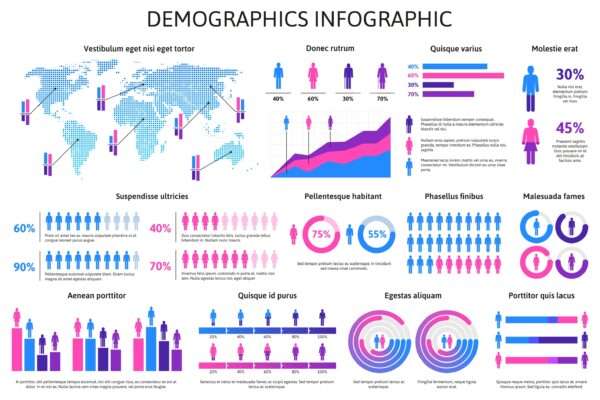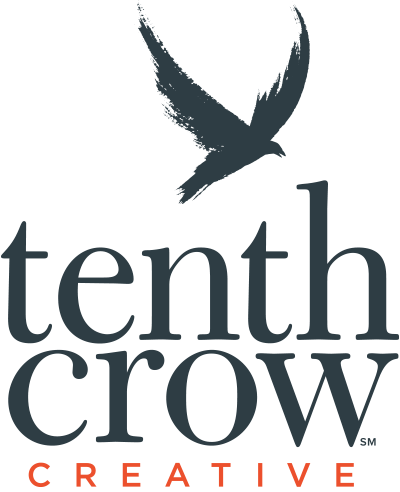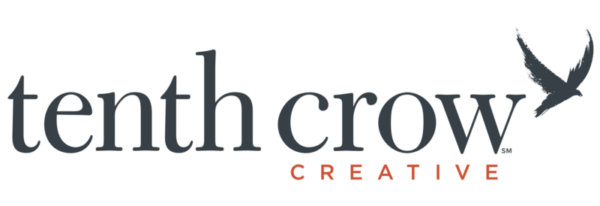
You have a solid marketing plan that you’re confident will spread the message about your healthcare organization. You’ve designed a great website, developed a social media campaign, planned and budgeted accordingly.
But are you reaching the right audiences with your marketing?
You probably have some basic demographic information about the people you’re targeting, but it’s beneficial to go even deeper than that. To truly connect with potential patients and drive meaningful engagement, healthcare organizations need to delve into the social determinants that shape their audience’s behaviors, needs, and challenges.

Demographic and socioeconomic data offer a big-picture view of the community your healthcare nonprofit or company serves: characteristics like age, gender, income, and so on. Government agencies collect this kind of data routinely, so it’s fairly easy to find online.
Typing the name of a city or county and the word ‘demographics’ into the Google search field, and you’ll likely see a Quick Facts table from the U.S. Census Bureau with an overview of the local population. For more detail, the U.S. Bureau of Labor Statistics releases demographic, income, and employment data through a library of online reports.
The U.S. Census Bureau’s data exploration tool lets you search by keyword and location to gain insight into your community’s education levels, wealth/poverty, access to healthcare and transportation, and other points of interest. The site holds tons of data and there are lots of ways to slice and dice it.
In addition, your city or county website likely offers a snapshot of the local population that’s geared to business leaders looking to potentially locate in the area.
If you’re a nonprofit hospital or are targeting a region served by a nonprofit hospital, that hospital’s Community Health Needs Assessment, a process required to be conducted every 3 years that evaluates the health needs of the community it serves, can provide a wealth of information to guide your marketing efforts, including serving as a basis for creating a marketing plan. This information is becoming even more valuable as value-based care models become more pervasive, requiring greater efforts around messaging that educates and drives behavior change.

Demographic data can tell you who these people are, which is certainly helpful. But you’ll need to dig a little deeper to understand how they behave and why. And that’s important in healthcare marketing, because there are lots of factors that influence how consumers choose a doctor or provider. If you’re looking to grow your roster of patients, you’ll need to identify what they need and what messages they’ll respond to.
Socioeconomic status, education, culture, background and other characteristics aren’t just descriptors; they affect how people make decisions about all kinds of things, including what doctor or pharmacy or mental health counselor they use. So some further research and analysis is required to understand the perspective of your audience.
Start by identifying the age groups your organization serves to gain insight into the generational differences that shape everything from spending patterns to communication preferences to healthcare needs. Baby Boomers are active and well-off in their later years, are a bit less tech-savvy than younger people, and value personal relationships. Gen Xers came of age before the internet and social media, so they favor platforms like Facebook and LinkedIn; they’re also independent and hard-working. Millennials are lifelong tech users who are curious and goal-oriented. The Gen Z audience is just now accessing healthcare on their own, and they’re using apps and digital platforms to track their health and interact with providers.
Get to know your organization’s existing base of clients or patients. Sit in the lobby or waiting room of your office and observe — not just demographic details like age, but people’s behavior. Talk with receptionists, practitioners, and other front-line workers to gain a picture of the different types of people your healthcare organization serves. Some additional questions to consider about your current audience:
You can gather additional research by conducting patient surveys through email or online. You might query patients either pre- or post-visit to learn how they found out about your medical office, why they chose it for their care, and how satisfied they are with the experience (Note that any medical information is confidential as part of the patient’s records).
Finally, you can divide your audience into groups with distinctive characteristics and create personas (an overused term these days, perhaps, but still a powerful tool) that represent each one. Personas are core to the work we do with our clients. These personas might be based on age — like millennials or seniors — or based on lifestyle attributes like busy moms or weekend warriors. We’ll assign each persona a profile that describes how they speak, what activities they pursue, what social channels they prefer, what they’re concerned about, and so on — the more detailed, the better.
These personas allow us to empathize with each segment of the audience, to understand who we’re communicating to, what they care about, and what they need from the organization. From there, we can confidently build a campaign with content and images that each group will respond to and targeted to those platforms where each group gets their information.
And often, we’re communicating with different sub-audiences, which is why integrated marketing campaigns are so critical.
There’s an art to audience identification that layers on the science of population/community/demographic data. Understanding who you’re talking with (the science) and what they need (the art) helps marketers create messages that resonate. Healthcare is complicated and sometimes scary, and you need to help people feel comfortable and confident coming to you for care. You can’t do that if you don’t know who they really are.
Need help defining and segmenting your audience? We can help — let’s have a conversation.
Tenth Crow Creative is a brand marketing agency that creates, aligns, and promotes messaging for health and wellness organizations. Through insightful branding, engaging design and compelling marketing campaigns, we help these essential organizations find their identities and effectively communicate with their stakeholders so they can fulfill their missions.

50 Lakeside Ave #H4
Burlington, Vermont 05401
802.391.9854
info@tenthcrowcreative.com

Posted By
Dylan Crow
Categories
Content Marketing, Healthcare Marketing, Marketing, Social Determinants of Health
Tags
#healthcarebranding, #healthcaremarketing